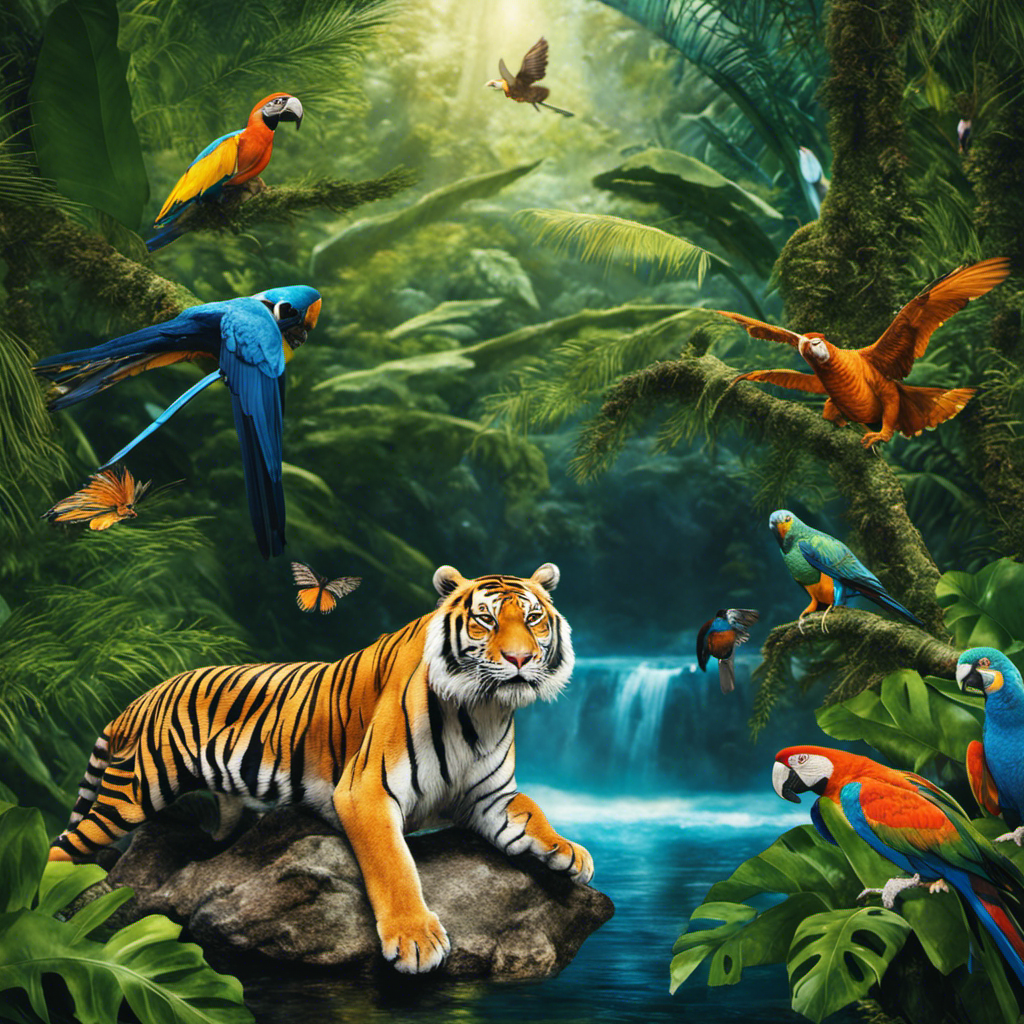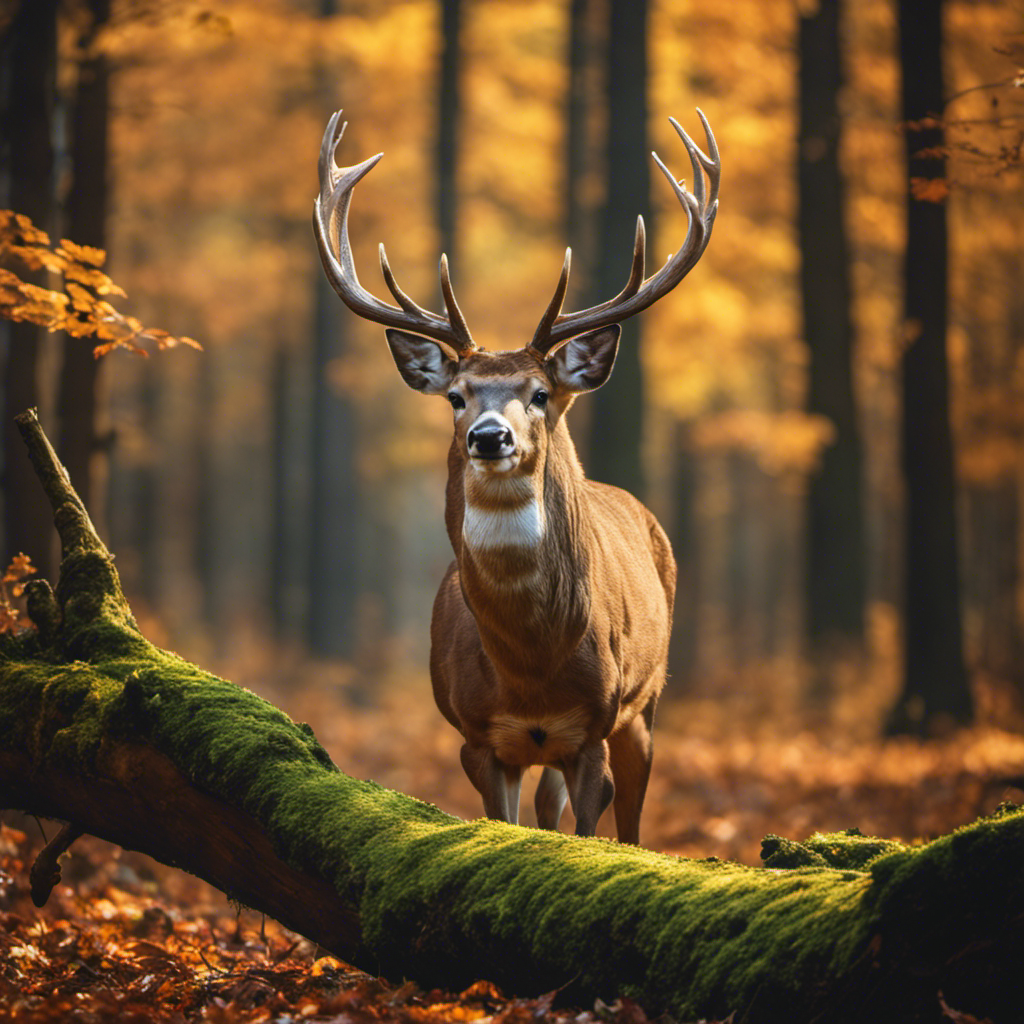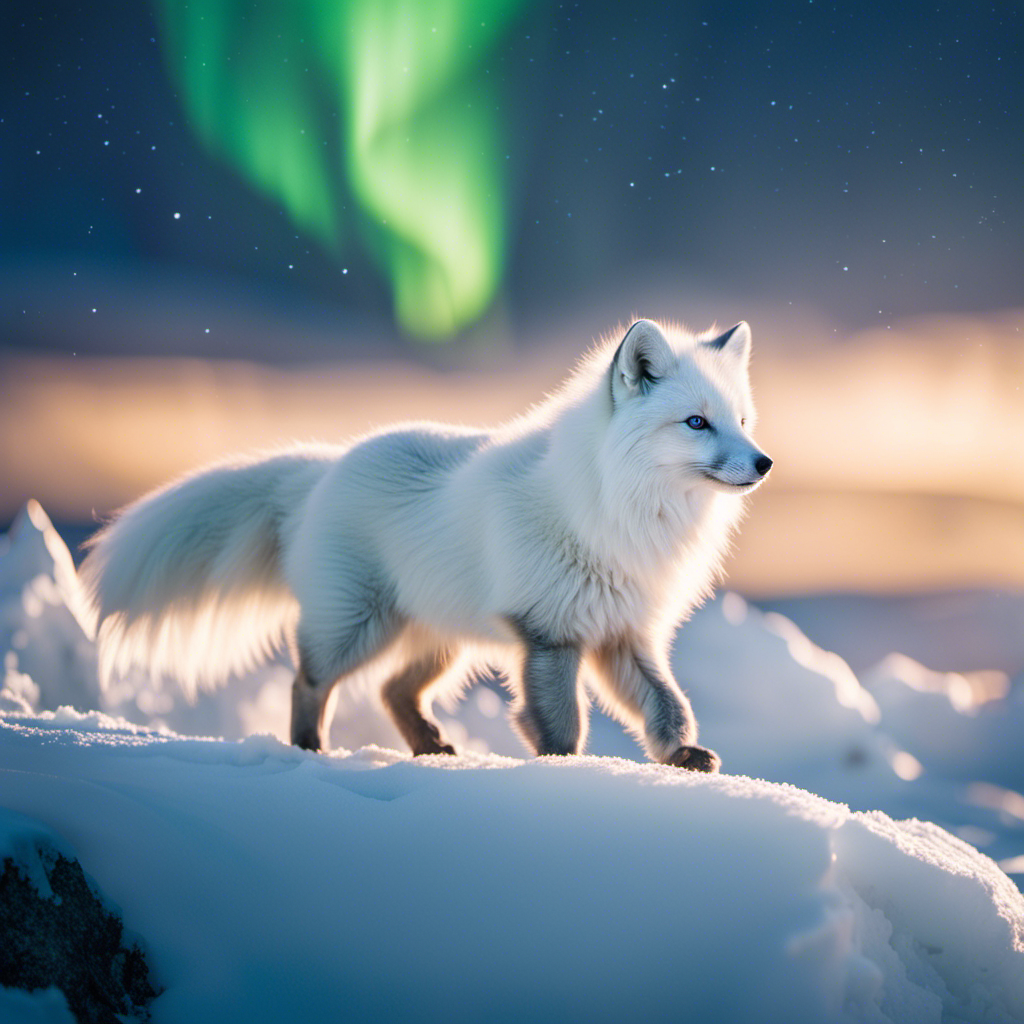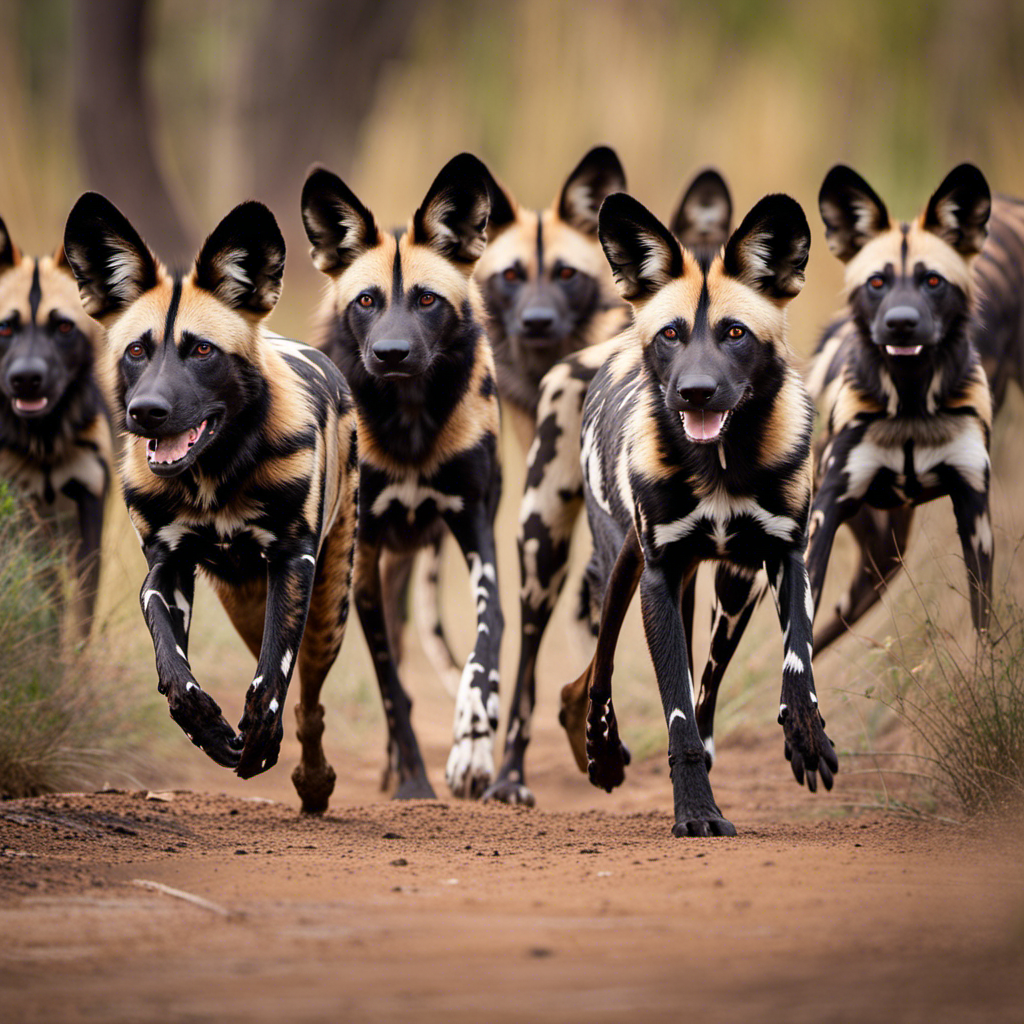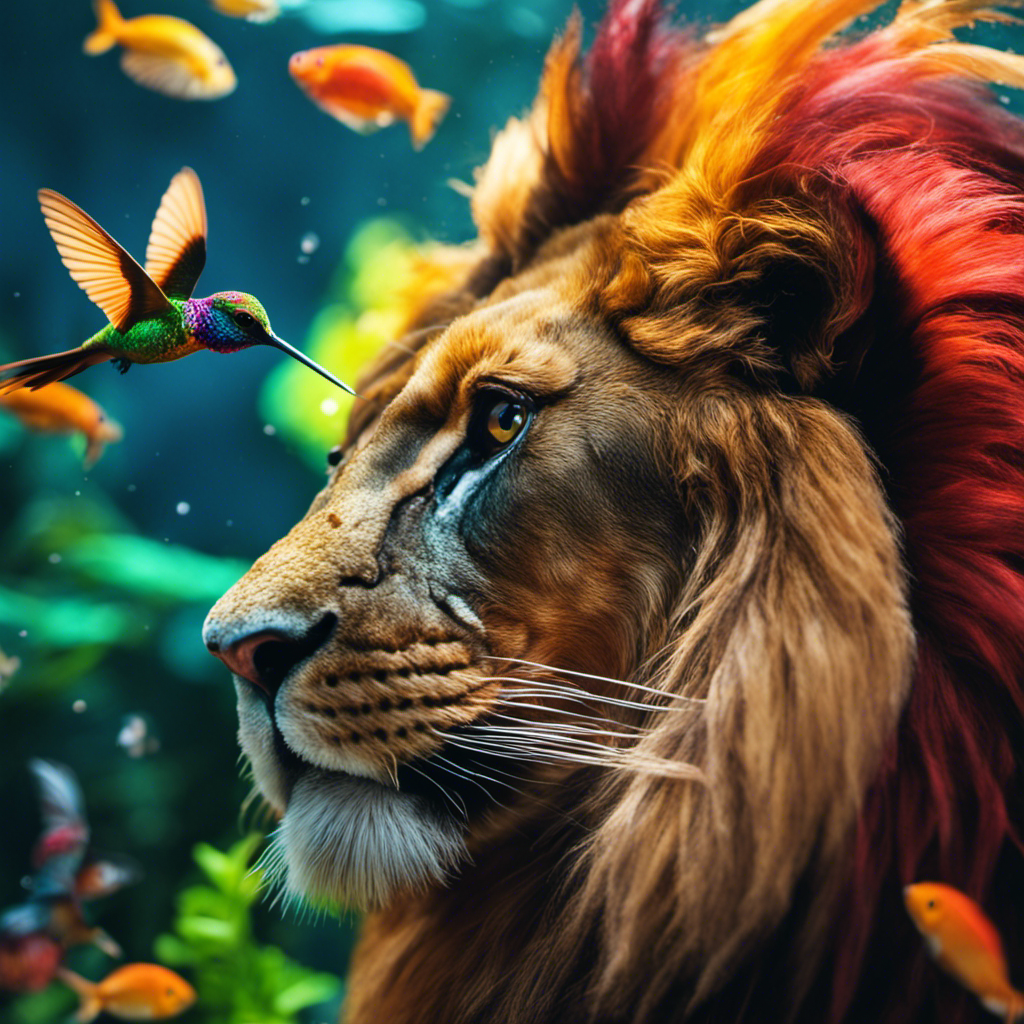Hey there!
Ever wondered about the amazing world of endangered animals? Get ready to be blown away by some mind-boggling and fascinating facts.
From their unique adaptations to their impact on ecosystems, these incredible creatures have so much to teach us.
In this article, we’ll dive deep into the little-known fun facts about endangered animals that will leave you in awe. So, come on an adventure with us and discover the untold stories of these remarkable beings and how they contribute to our shared planet.
Let’s get started!
Key Takeaways
- Endangered animals possess unique and remarkable adaptations for survival, such as the Sumatran tiger’s ability to swim long distances and the axolotl’s remarkable regenerative abilities.
- Conservation of endangered animals is crucial for preserving ecosystems and biodiversity for future generations, as well as preventing the loss of vibrant colors and majestic roars.
- Community involvement, technological advancements, collaborative partnerships, and conservation techniques all play a vital role in protecting endangered animals.
- Species preservation, advocating for stronger laws, supporting conservation organizations, and promoting sustainable practices are important in safeguarding the diversity of life and witnessing the beauty of iconic animals.
12 Fascinating Facts About Endangered Animals
Did you know that some endangered animals, like the Sumatran tiger, can swim up to 6 kilometers? It’s astonishing to think about the surprising adaptations these lesser known species have developed over time.
These remarkable creatures have had to adapt to their environments in unique ways in order to survive. Take the axolotl, for example. This extraordinary amphibian has the ability to regenerate its limbs, spinal cord, heart, and even parts of its brain! Imagine if humans possessed such a remarkable skill.
These incredible adaptations not only showcase the resilience of endangered animals but also remind us of the awe-inspiring wonders of nature. As we learn more about these lesser-known species and their amazing abilities, we begin to understand just how interconnected and precious our world truly is.
The Importance of Endangered Animal Conservation
Imagine a world where the vibrant colors of tropical birds fade into black and white, where the roar of majestic lions is silenced forever.
Conservation plays a vital role in preventing this nightmare from becoming a reality. By preserving endangered species, we not only safeguard their existence but also protect the delicate balance of our planet’s ecosystems.
The preservation of these extraordinary creatures is crucial for maintaining biodiversity and ensuring a sustainable future for generations to come.
Conservation’s Vital Role
You can’t underestimate the vital role that conservation plays in protecting endangered animals. Conservation techniques not only help preserve the habitats of these magnificent creatures but also aid in their recovery. Here are three incredible ways conservation is making a difference:
- Community involvement: By engaging local communities in conservation efforts, we create a sense of belonging and empower individuals to take an active role in protecting endangered animals. Together, we can achieve remarkable results.
- Technology advancements: Innovative technologies like GPS tracking devices and drones enable us to monitor and protect endangered species more effectively. These tools provide invaluable insights into their behavior, helping us develop targeted conservation strategies.
- Collaborative partnerships: Conservation organizations working together with governments, scientists, and local communities foster collaborative solutions for endangered animal recovery. By combining expertise and resources, we can make a lasting impact on the preservation of these precious creatures.
With these innovative approaches, we have the power to secure a future where all beings thrive harmoniously. Join us on this visionary journey towards safeguarding our planet’s most vulnerable inhabitants!
Species Preservation Is Crucial
Preservation of species is of utmost importance in maintaining the delicate balance of our ecosystem. By actively participating in species preservation and supporting conservation efforts, you can play a crucial role in safeguarding the diversity of life on Earth.
Imagine a world where iconic animals like tigers, elephants, and gorillas are no longer roaming freely. To prevent this from becoming a reality, we must take action now. Together, we can make a difference by advocating for stronger laws to protect endangered species, supporting organizations dedicated to their conservation, and promoting sustainable practices that minimize harm to their habitats.
Let us work hand in hand to ensure future generations have the opportunity to witness the beauty and wonder of these magnificent creatures.
Protecting Biodiversity Is Essential
To truly appreciate the intricate web of life on our planet, it’s vital that we prioritize the protection of biodiversity. Biodiversity refers to the incredible variety of species that exist on Earth. It is this diversity that allows ecosystems to thrive and function harmoniously. Without it, our planet would be a dull and lifeless place.
So, let us embark on a journey to understand the importance of biodiversity and explore conservation strategies together.
- Conservation Strategies:
- Preservation of habitats: Protecting natural habitats ensures that diverse species have a safe space to live and thrive.
- Sustainable practices: Encouraging sustainable agriculture, fishing, and forestry helps minimize negative impacts on biodiversity.
- Education and awareness: Spreading knowledge about the value of biodiversity fosters a sense of responsibility among individuals and communities.
In protecting biodiversity, we not only secure the future for countless plants and animals but also safeguard our own existence. Let us join hands in conserving our precious planet for generations to come.
Surprising Traits of Endangered Animal Species
Welcome to the fascinating world of endangered animal species, where survival is a constant battle and adaptation takes on extraordinary forms.
From the unique survival adaptations that allow these creatures to thrive in their challenging environments, to the threats they face and the conservation efforts aimed at preserving their existence, there is so much to discover.
Prepare to be captivated by their unusual behavioral patterns, as you delve into the captivating realm of these remarkable animals and gain a deeper understanding of their struggle for survival.
Unique Survival Adaptations
Did you know that some endangered animals have developed unique survival adaptations to help them thrive in their environments? These uncommon adaptations are fascinating examples of the incredible resilience and resourcefulness of these extraordinary creatures. From camouflage techniques to specialized physical features, these survival strategies showcase nature’s ingenuity at its finest.
One remarkable example is the leaf-tailed gecko, native to Madagascar. This master of disguise has evolved an uncanny ability to blend seamlessly into its surroundings by mimicking the appearance of a dead leaf. With its flattened body and intricate patterns, it becomes nearly invisible against tree trunks and branches, effectively avoiding predators.
Another astonishing adaptation can be found in the Saharan silver ant. In the blistering heat of the desert, this tiny insect has developed long legs that enable it to move swiftly across scorching sands. Its silver-colored hairs reflect sunlight, helping it stay cool under extreme temperatures.
These unique survival adaptations demonstrate the incredible adaptability and resilience of endangered animals. They remind us that even in challenging circumstances, life finds a way to flourish and inspire us with its boundless creativity.
Threats and Conservation Efforts
You can help protect vulnerable species by supporting conservation efforts aimed at preserving their habitats and raising awareness about the threats they face. Conservation challenges are numerous and complex, but with your help, we can make a difference.
Endangered species recovery is a critical process that requires the collective effort of individuals, communities, and governments worldwide. By working together, we can create a future where these magnificent creatures thrive in their natural habitats.
Conservation challenges include habitat loss, pollution, climate change, illegal wildlife trade, and invasive species. These threats continue to put immense pressure on endangered species populations around the world. However, through active participation in conservation initiatives and promoting sustainable practices within our own lives, we can contribute to their protection.
Endangered species recovery requires long-term commitment and dedication. It involves implementing strategies such as captive breeding programs, habitat restoration projects, education campaigns focused on raising awareness about the importance of biodiversity, and advocating for stronger legal protections.
Remember that you hold the power to make a positive impact on our planet’s most vulnerable inhabitants. Together, let’s safeguard their future by actively engaging in conservation efforts and championing their cause.
Unusual Behavioral Patterns
If you observe any strange behavioral patterns in wildlife, it is important to report them to local conservation authorities.
Our world is filled with fascinating creatures, each with its own unique way of life. Some endangered animals exhibit unusual mating rituals and communication methods that capture our imagination and remind us of the beauty of nature’s diversity.
From the elaborate courtship dances of birds like the sage grouse to the intricate vocalizations of whales, these behaviors highlight the incredible complexity and adaptability of species.
By studying and understanding these peculiar behaviors, scientists can gain valuable insights into animal populations and develop effective conservation strategies.
So next time you witness something out of the ordinary in nature, don’t hesitate to share it with those who are working tirelessly to protect our planet’s precious biodiversity.
Together, we can ensure a future where all living beings thrive and belong.
Unique Adaptations of Endangered Animals
Take a look at how endangered animals have developed unique adaptations to survive in their changing environments. These remarkable creatures have evolved in ways that allow them to thrive against all odds. Here are three incredible examples:
- Camouflage mastery: Many endangered animals possess the ability to blend seamlessly into their surroundings, making it difficult for predators or prey to spot them. From the snow-white fur of Arctic foxes to the leaf-like appearance of stick insects, these adaptations ensure their survival.
- Specialized diets: Some endangered animals have adapted to specific food sources that may be scarce or difficult to obtain. For instance, the koala has evolved a specialized digestive system that allows it to survive solely on nutrient-poor eucalyptus leaves.
- Extreme endurance: Endangered animals often face harsh conditions and intense challenges in their habitats. To combat this, they have developed incredible physical abilities such as long-distance migration in birds and deep-diving capabilities in marine mammals.
These unique adaptations showcase the resilience and ingenuity of endangered animals as they strive to secure their place in an ever-changing world.
Endangered Animals and Their Natural Habitats
Explore the diverse natural habitats that provide sanctuary for a wide array of endangered species, allowing them to thrive in their unique environments. These habitats are essential for the survival of these precious animals.
As human beings, we have a responsibility to protect and preserve these environments in order to ensure the future existence of these endangered animal species. Conservation efforts play a crucial role in this endeavor.
By raising awareness about the importance of preserving natural habitats, we can inspire others to join us in our mission. Together, we can make a difference and create a world where these animals not only survive but also thrive.
So let us come together, embrace our shared responsibility, and work towards safeguarding our planet’s incredible biodiversity for generations to come.
Lesser-Known Endangered Animal Species
Learn about some lesser-known endangered species and the important role they play in our ecosystem. These animals may not be as well-known as tigers or elephants, but their conservation is just as crucial.
Here are a few examples:
- Axolotl: This unique amphibian is found only in Mexico and is famous for its ability to regenerate lost body parts.
- Saiga Antelope: With its distinctive nose that resembles a trunk, this antelope roams the grasslands of Central Asia.
- Kakapo: This flightless parrot from New Zealand is not only adorable but also critically endangered due to habitat loss and introduced predators.
- Vaquita: Known as the ‘panda of the sea,’ this small porpoise faces extinction primarily due to bycatch in fishing nets.
Conservation efforts for these lesser-known species are essential for maintaining biodiversity and preserving our planet’s delicate balance. By raising awareness and supporting organizations dedicated to their protection, we can ensure a future where these fascinating creatures continue to thrive alongside us.
Unusual Behaviors of Endangered Animals
Now that you’ve learned about some lesser-known endangered animal species, let’s dive into the fascinating world of their unusual behaviors. These remarkable creatures have developed unique strategies for survival, especially when it comes to mating rituals and communication methods. Picture this: a vibrant 2 column and 3 row table, showcasing the diversity of their extraordinary behaviors.
| Animal | Unusual Mating Rituals |
|---|---|
| Greater Sage-Grouse | Elaborate courtship dances with puffed-up chests and colorful displays |
| Aye-Aye | Tapping on trees with their long middle finger to locate potential mates |
| Bowerbird | Building intricate structures called bowers to impress females |
Their communication methods are equally intriguing:
| Animal | Communication Methods |
|---|---|
| Blue Whale | Producing low-frequency songs that can travel for miles underwater |
| Bonobo | Using vocalizations, facial expressions, and body movements to convey emotions |
| African Elephant | Emitting deep rumbling sounds through their trunks to communicate over long distances |
These unusual behaviors highlight the incredible adaptability of these endangered animals, reminding us of the importance of protecting them for future generations.
Threats Facing Endangered Animals Today
Hey there!
Let’s dive into the discussion on the threats facing endangered animals today.
Brace yourself, because we’re about to explore the harsh reality of human impact on habitats, the alarming effects of climate change, and the devastating consequences of illegal wildlife trade.
Together, we’ll uncover the urgent need for action and inspire a collective effort to protect our precious wildlife from these imminent dangers.
Human Impact on Habitats
You can’t deny that human activity has a significant impact on the habitats of endangered animals. Our actions, whether intentional or unintentional, often lead to habitat destruction, jeopardizing the survival of these magnificent creatures. Human activities such as deforestation, pollution, and urbanization are major contributors to this problem.
Consider the table below for a glimpse into how our actions affect various endangered animal habitats:
| Endangered Animal | Human Activities | Impact on Habitat |
|---|---|---|
| Sumatran Tiger | Deforestation | Loss of forest cover disrupts their natural hunting and breeding grounds. |
| Leatherback Turtle | Plastic Pollution | Ingestion of plastic waste leads to injuries and death. Destruction of nesting sites due to coastal development affects their reproduction. |
| African Elephant | Illegal Poaching | Hunting for ivory reduces their population drastically. Destruction of vegetation for agriculture affects their food sources. |
We must recognize the importance of preserving these habitats and take responsibility for our actions. By making conscious choices and implementing sustainable practices, we can create a future where both humans and endangered animals coexist harmoniously in thriving habitats.
Climate Change Effects
Take a moment to consider how climate change is impacting various habitats around the world. The consequences of climate change are far-reaching and have a profound effect on our planet’s delicate ecosystems.
As temperatures rise, sea levels increase, and extreme weather events become more frequent, many species are struggling to adapt and survive. Endangered species, in particular, face challenges in finding suitable habitats and resources to sustain themselves.
However, amidst these challenges lies an opportunity for innovation and adaptation. By studying how these endangered species are responding to changing conditions, we can gain valuable insights into nature’s resilience and potential solutions for conservation efforts.
Together, we can create a future where endangered species not only survive but thrive in their newly transformed habitats. Let us embrace the task of protecting them as part of our collective responsibility towards preserving the beauty and diversity of our planet.
Illegal Wildlife Trade
Consider the detrimental impact of illegal wildlife trade on global biodiversity and the urgent need for collective action to combat this harmful practice. Wildlife trafficking, often driven by the black market, poses a grave threat to our planet’s precious species. It is time for us to stand together and protect these vulnerable creatures. In order to fully grasp the gravity of this issue, let’s delve into some eye-opening facts:
| Fact | Impact |
|---|---|
| Over 7,000 species affected | Loss of vital ecosystems and ecological balance |
| $10-20 billion industry | Funding criminal networks and corruption |
| Tigers are worth $50,000 | Encouraging poaching and endangering populations |
| Ivory trade claims 30,000+ elephants annually | Decimating elephant populations |
These statistics highlight how wildlife trafficking fuels destruction and threatens our shared heritage. We must act now to dismantle the illegal trade networks and preserve biodiversity for future generations. Together, we can make a difference and ensure a world where all species thrive harmoniously in their natural habitats.
Success Stories in Endangered Animal Conservation
There’s been some great progress in endangered animal conservation efforts. Thanks to innovative and visionary approaches, we are witnessing remarkable success stories in reintroduction efforts.
Endangered animal breeding programs have played a vital role in bringing these magnificent creatures back from the brink of extinction. Imagine standing amidst a lush forest, watching as a majestic Siberian tiger prowls gracefully through the trees.
Or picture yourself snorkeling in crystal clear waters, observing vibrant coral reefs teeming with life, including the once critically endangered hawksbill sea turtle. These awe-inspiring sights are not just dreams; they are now a reality because of our collective commitment to protecting and restoring Earth’s precious biodiversity.
Little-Known Endangered Animal Fun Facts
Did you know that the pangolin, a little-known creature, is the most trafficked mammal in the world? It’s heartbreaking to think about these amazing animals being hunted and killed for their scales and meat. The pangolin is just one example of many lesser-known endangered species that are facing threats every day. Let’s take a moment to appreciate the incredible adaptations that these animals have developed over time to survive in their environments. Here’s a table showcasing some remarkable endangered animal adaptations:
| Animal | Adaptation | Importance |
|---|---|---|
| Pangolin | Scales made of keratin provide protection from predators | Vital for survival |
| Axolotl | Ability to regenerate lost body parts | Helps them recover from injuries |
| Saola | Long, sharp horns for defense | Protects against predators |
These adaptations highlight how unique and special each endangered species is. By learning about them, we can inspire others to join us in protecting these incredible creatures and ensure their place on our planet for generations to come. Together, we can make a difference and create a world where all living beings belong.
Incredible Endangered Animal Survival Stories
You’ve learned some fascinating fun facts about endangered animals, but now let’s dive into the incredible animal rescues and endangered species breeding programs that have helped save these precious creatures. Get ready to be inspired by their stories of survival and resilience.
- Unlikely Heroes: In some cases, it was ordinary people who took extraordinary measures to rescue endangered animals from the brink of extinction. These unsung heroes showed us that anyone can make a difference.
- Innovative Techniques: From artificial insemination to surrogate parenting, scientists and conservationists have developed groundbreaking methods to breed and protect endangered species. These cutting-edge techniques give hope for the future of these animals.
- Global Collaboration: The fight to save endangered animals is a collective effort that spans across countries and continents. International organizations work together to exchange knowledge, resources, and support for these vital conservation projects.
- Success Stories: Thanks to these incredible efforts, many endangered species have made remarkable comebacks from the edge of extinction. Their stories remind us of the power we hold in our hands when we choose to protect and preserve our planet’s biodiversity.
These tales of rescue and revival highlight the indomitable spirit of both humans and animals working together for a brighter future where all creatures thrive together in harmony.
Endangered Animals and Their Impact on Ecosystems
Endangered species play a crucial role in maintaining the delicate balance of ecosystems. These extraordinary animals, with their unique characteristics and behaviors, contribute to the intricate tapestry of life on Earth. From the majestic tiger to the humble honeybee, each endangered animal species has its own vital role in balancing ecosystems. They are like puzzle pieces that fit perfectly into their habitats, performing tasks that keep nature in harmony.
However, the impact of habitat destruction on endangered animals is devastating. As human activities continue to encroach upon their territories, these animals face numerous challenges. The destruction of forests and pollution of water sources disrupts their natural habitats, leaving them vulnerable and struggling for survival.
It is our responsibility to protect these incredible creatures and restore their habitats. By conserving forests, preserving water bodies, and promoting sustainable practices, we can ensure that endangered animal species have a chance to thrive again.
Together, let us embrace our connection with nature and work towards creating a world where all beings can coexist harmoniously.
Frequently Asked Questions
What Are the Main Causes of Endangerment for Animals?
You cause endangerment for animals through your human activities, particularly by destroying their habitats. Your actions have a significant impact on their survival. Let’s take responsibility and work together to protect these precious creatures.
How Do Endangered Animals Contribute to the Balance of Ecosystems?
Endangered animals play a vital role in maintaining biodiversity and the balance of ecosystems. Losing them would have a devastating impact on the delicate web of life, disrupting harmony and threatening our own existence.
Are There Any Specific Endangered Animal Species That Have Successfully Recovered From the Brink of Extinction?
There are indeed specific endangered animal species that have successfully recovered from the brink of extinction. Endangered animal recovery efforts and conservation success stories show how we can make a positive impact on our planet.
What Are Some Unique Ways in Which Endangered Animals Adapt to Their Environments?
Endangered animals have developed unique adaptations to cope with changing environments. They use camouflage, mimicry, and behavioral changes to survive. These incredible abilities allow them to blend in, deceive predators, and find resources for their survival.
Can You Provide Examples of Lesser-Known Endangered Animal Species and Their Habitats?
You may not know, but there are many lesser-known endangered animal species and their habitats that need our attention. Let’s explore some examples and the conservation efforts being made to protect them.
Conclusion
Congratulations! You’ve just embarked on a journey of discovery, exploring the fascinating world of endangered animals. By delving into their unique adaptations, surprising traits, and incredible survival stories, you’ve gained a deeper appreciation for the importance of conservation efforts.
These little-known fun facts have shed light on the impact these creatures have on ecosystems and inspired you to contribute towards their protection.
Together, we can make a difference and ensure a brighter future for these amazing endangered animals. Let’s be the change they need!
